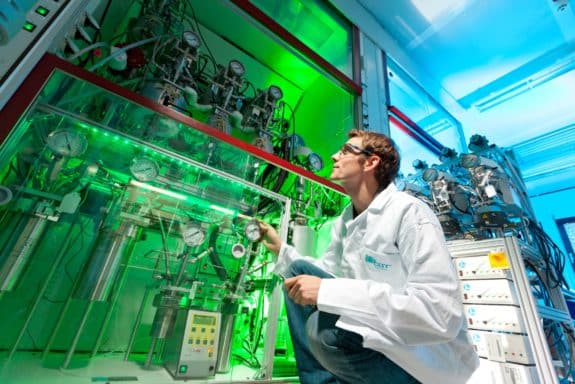Episode 6: Chemists at the RWTH are storing the climate-unfriendly greenhouse gas CO2 in mattresses.
As a “climate killer”, CO2 has a pretty bad reputation. No wonder, then, that scientists all over the world are exploring possible ways to use this compound of carbon and oxygen productively instead of blowing it into the Earth’s atmosphere.
And researchers from the RWTH’s Chair of Technical Chemistry and Petrochemistry and from the company Covestro have now come up with just that. They have developed a process to integrate CO2 as a raw material in polyurethane plastics, which are used, for example, to make mattresses and upholstery. Since summer 2016, Covestro has been applying the new method on an industrial scale at its works in Dormagen.
Chemists have been searching for decades for that certain trick that would make such an application possible. The key turns out to be a revolutionary catalyst that allows CO2 molecules to be directly integrated into the chemical chain of the foam precursor. An exhaustive life cycle analysis conducted at the Institute of Technical Thermodynamics of the RWTH Aachen has verified that, in this way, the carbon balance of the material’s production process is improved by up to 20%. The hope of the responsible team of scientists is that the new process will contribute in the long term to a shift towards a sustainable carbon recycling economy.
And who invented it? Scientists from the RWTH’s Chair of Technical Chemistry and Petrochemistry and from the company Covestro, of course.




